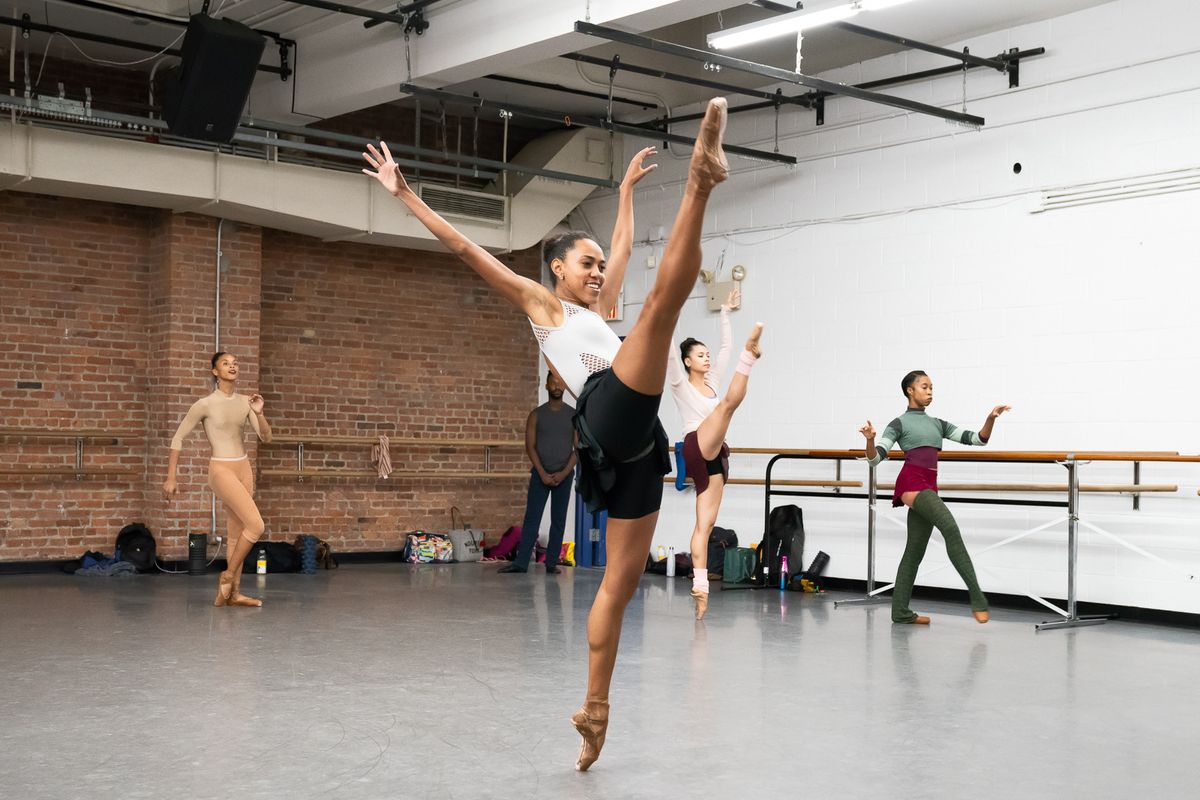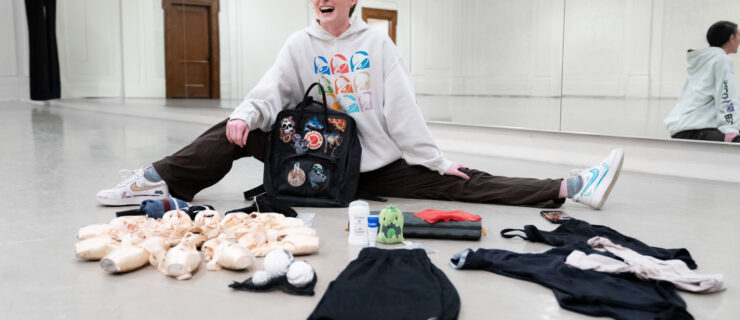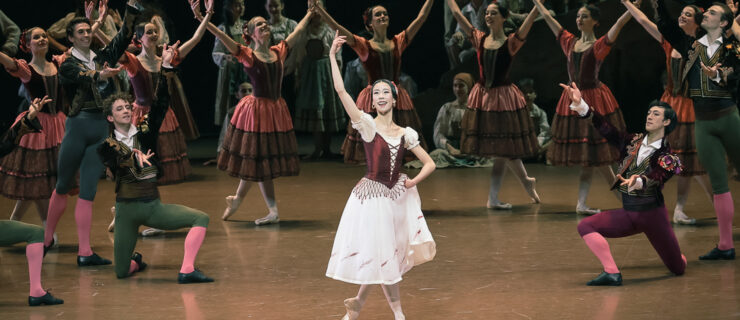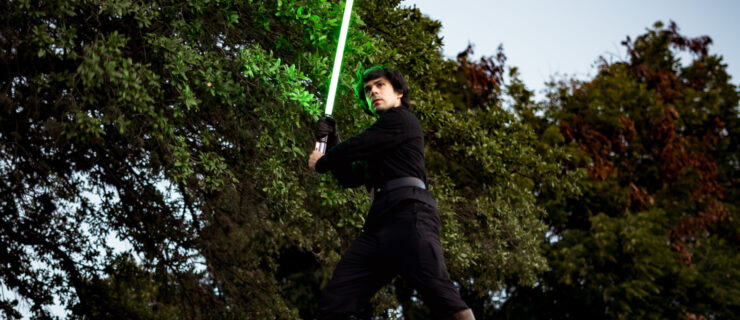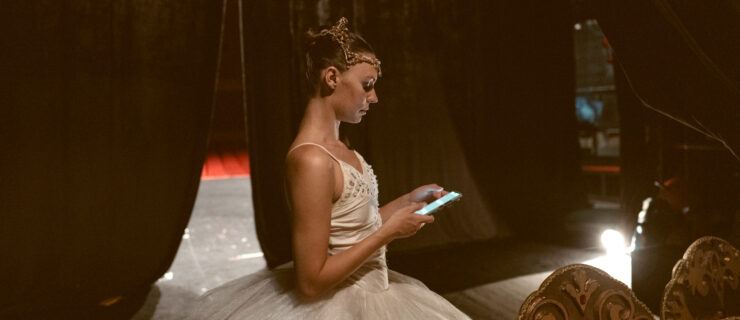Dance Theatre of Harlem at 50: Inside Rehearsals As the Pioneering Company Celebrates a Major Milestone
“Keep the rhythm going,” calls Robert Garland, Dance Theatre of Harlem’s resident choreographer, from the front of the studio. Five company women pulse through a series of syncopated pony steps, upright arabesque sissonnes and funky, Motown-inspired dance moves. It’s an open rehearsal in early September, and the company is giving curious audience members a sneak peek at Garland’s upcoming world premiere—one of several new works this season as DTH celebrates its 50th anniversary.
Founded in 1969 by former New York City Ballet principal Arthur Mitchell and Karel Shook, DTH was groundbreaking in its makeup of mostly African-American dancers, and its insistence that they could excel in ballet. “We were a bunch of dancers who had been told no, we couldn’t do this, and Mr. Mitchell was giving us a chance to show that we could,” says artistic director Virginia Johnson, a founding company member and former principal. “He was a very demanding taskmaster—he knew there was something very important to prove and that it was on us to prove it.”
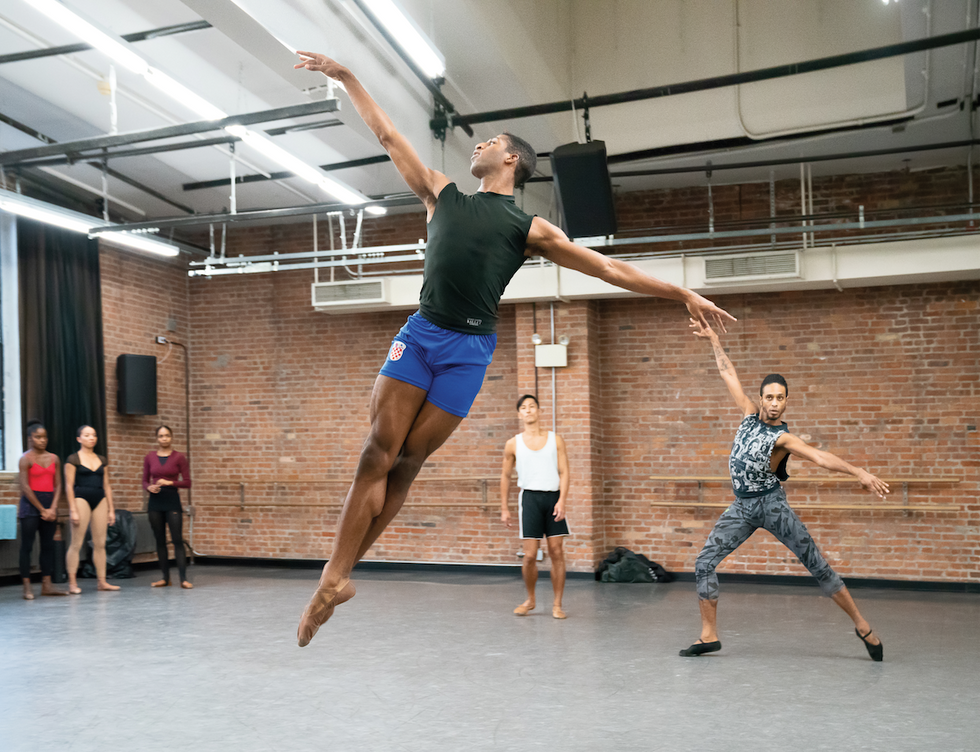
Derek Brockington during the company’s Thursdays @ DTH open rehearsal. “A huge highlight [of the season] was meeting and working with the great Mr. Mitchell himself,” says DTH dancer Crystal Serrano. “Bringing some of the past as we revive [his] works, along with showcasing how Dance Theatre of Harlem has thrived to this day, is all very exciting.”
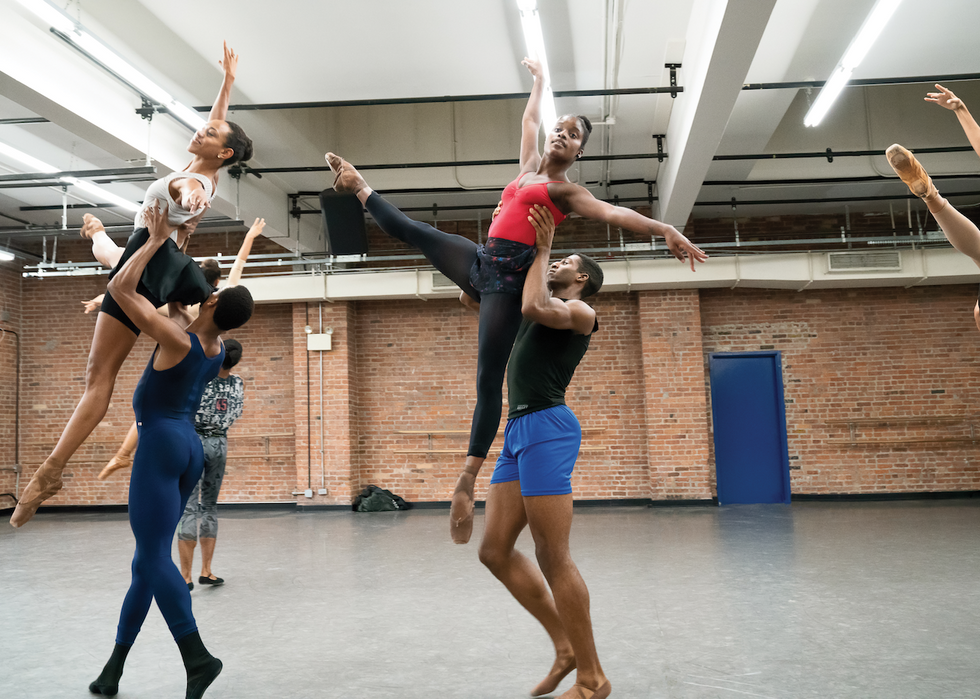
Croop, Anthony Santos, Ingrid Silva and Brockington practice a lift sequence. “What excites me about the company’s 50th is celebrating Mr. Mitchell’s life,” says Santos. “This man paved the way for all African Americans in the ballet world. Without Mr. Mitchell, who knows how long it would have taken to see black people in ballet companies. Every time I am performing, touring, or doing anything associated with work, I’m doing it for Mr. Mitchell. We shall celebrate a King.”
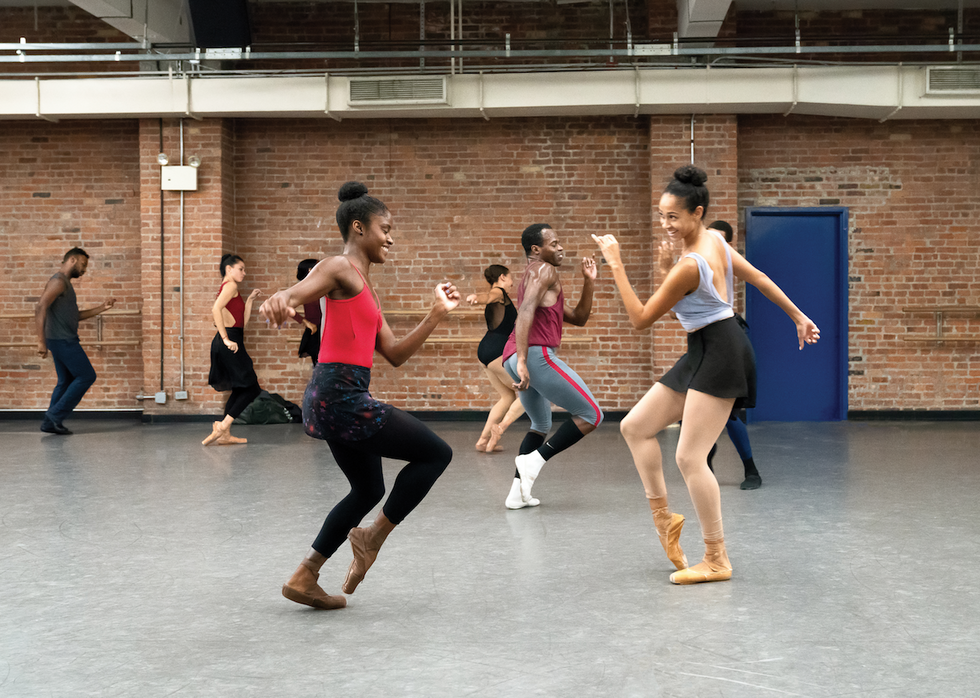
I’m currently the only company member who trained in the school and I’m very proud of this,” says Christopher Charles McDaniel (in red shirt above), who joined DTH last season. “It’s an immense honor to be back home fulfilling Mr. Mitchell’s legacy.”
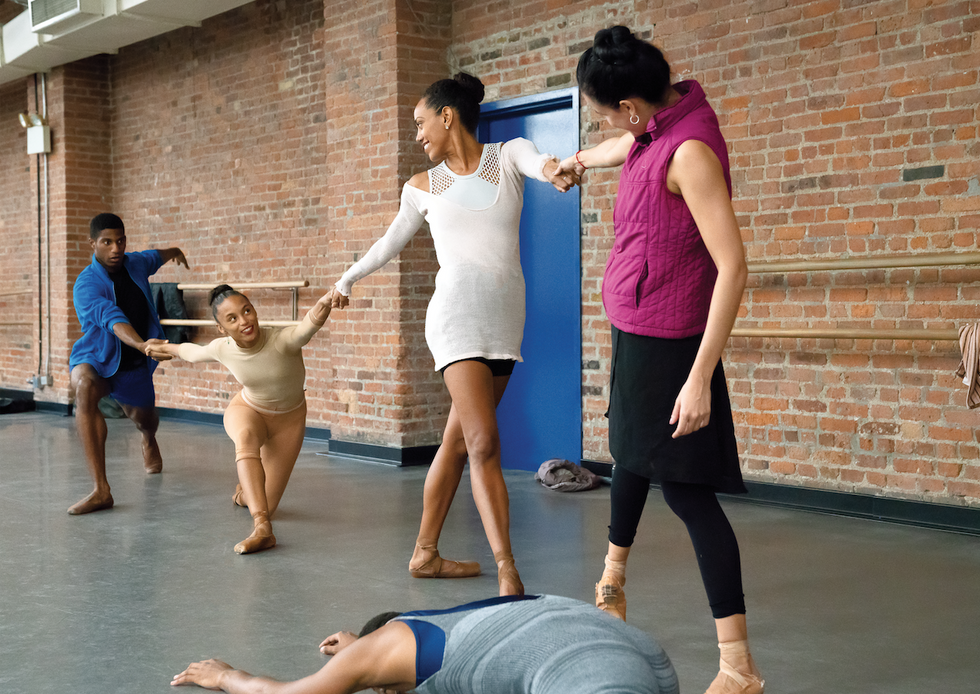
Brockington, Amanda Smith, Croop and Yinet Fernandez review choreography before their Thursdays @ DTH open rehearsal. “The most exciting part is going to be seeing the lineage and legacy unfold,” says McDaniel. “Fifty years of success means we’ll get to meet a lot of the movers and shakers who paved the way for us. We have lots of support, lots of pressure, but a stunning line of incredible dancers to follow. It’s exciting for a DTH baby!”
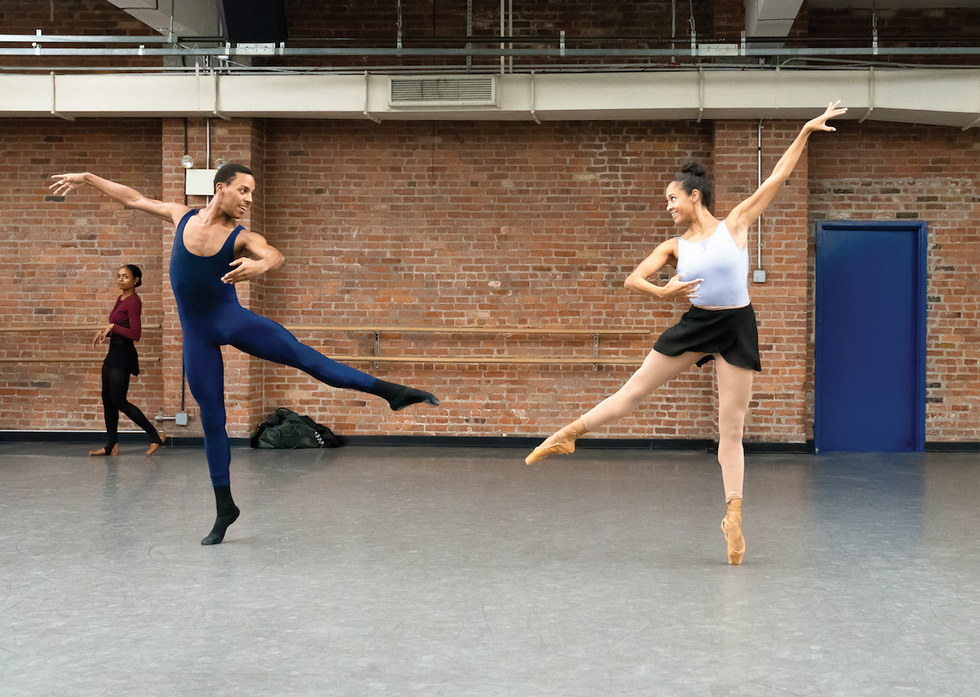
“This man paved the way for all African Americans in the ballet world,” says Santos, above. “Every time I am performing, touring, or doing anything associated with work, I’m doing it for Mr. Mitchell.”
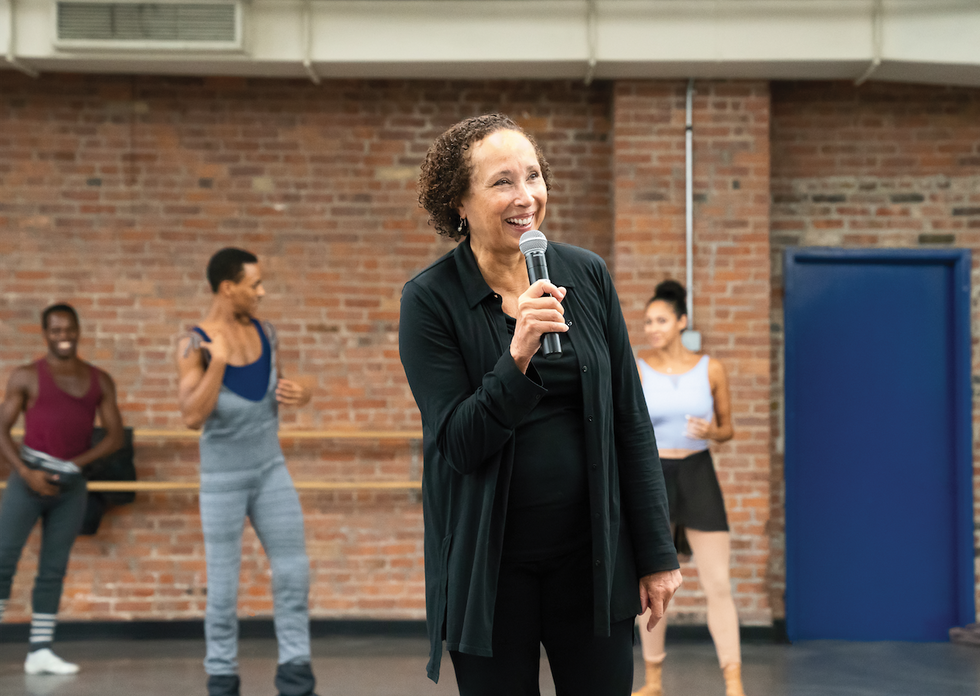
“Mr. Mitchell taught me that being a part of this art form means you have a responsibility to it, and you must make it excellent and pure and authentic for the time that you’re living in. And you must not let anyone get in the way of doing that.” —Virginia Johnson
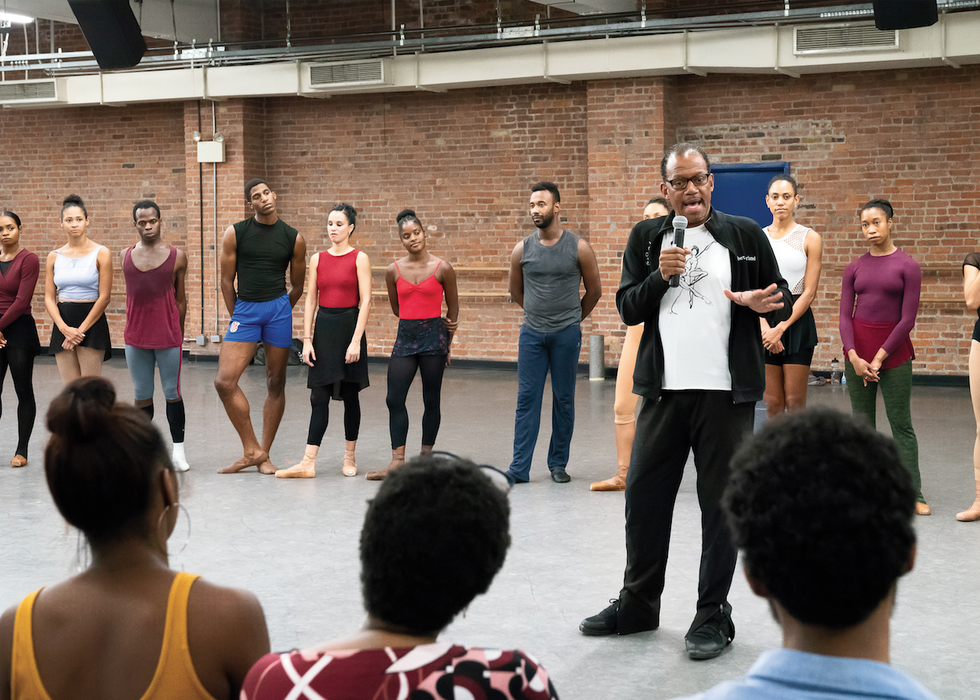
Robert Garland answers questions after the company’s open rehearsal. “Mr. Mitchell always said don’t be classical, be classic,” he says later in a phone interview. “A lot of dance training is via imitation, but there comes a time where you have to embrace the art form and turn it into something that fully reflects who you are on the inside. Be classic, something in and of the moment that will last forever.”
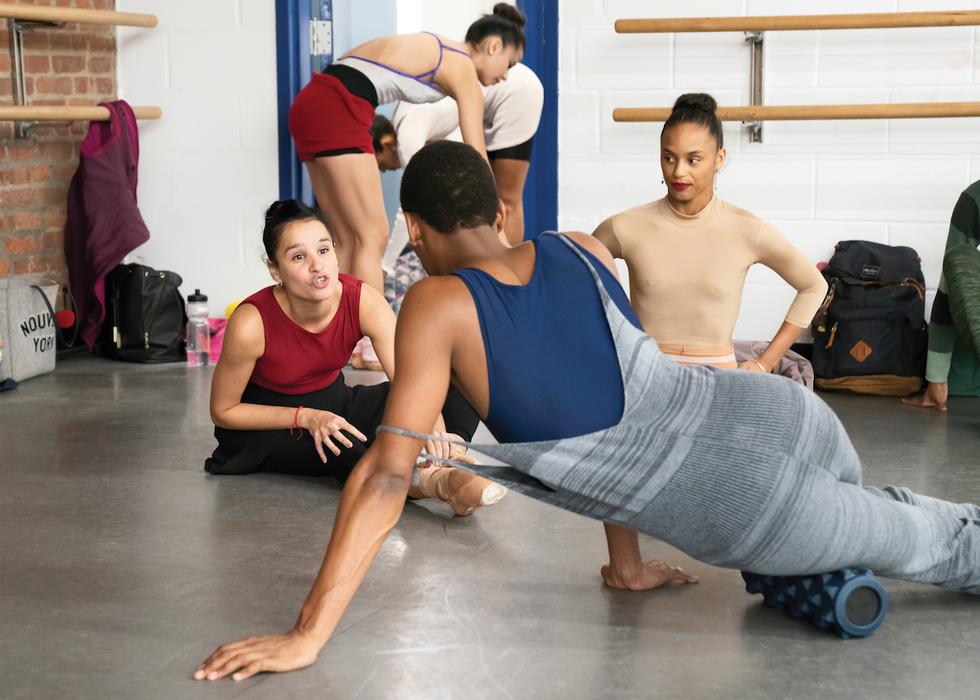
Dancers cooling down after rehearsal. “Being a part of DTH means not only do I get to fulfill my dream and passion of being a dancer, but I also feel a strong purpose behind my dancing,” says Serrano. “When I was younger, ballerinas were like make-believe unicorns. I never thought it would be reality to be a ballerina, let alone my reality coming from Mexican immigrant parents. Being a part of DTH means I too can share my story that ballerinas are real and come from all different backgrounds.”
Photography by Kyle Froman for Pointe
For the 50th-anniversary season, the company is bringing back favorite ballets vital to its history, such as Dougla and Adagietto #5, as well as brand-new works. Garland’s neoclassical ballet, to music by Michael Nyman, is at times reminiscent of Balanchine’s Agon (Mitchell famously starred in the 1957 premiere). “But the idea is more that you’re watching The Temptations or The Four Tops,” says Garland. He adds that when he was dancing with DTH, the company’s primarily African-American culture and its classical, Western European aesthetic lived in two different strata. “In my work, it’s important to me to have those two things present and on an equal basis—I believe that holistic approach is the kind of world that Arthur Mitchell believed in and wanted to see.”
A few weeks earlier, Mitchell had worked with the dancers in preparation for the season. Sadly, he passed away at age 84 shortly after Pointe photographed Garland’s rehearsal. Here, company members reflect on his legacy.
